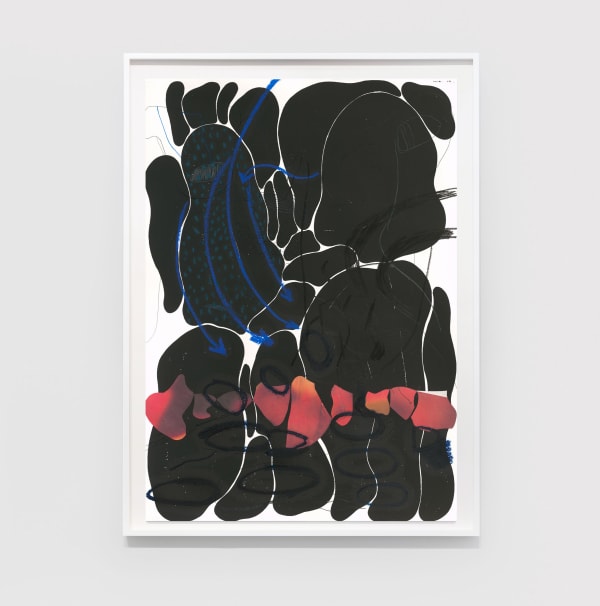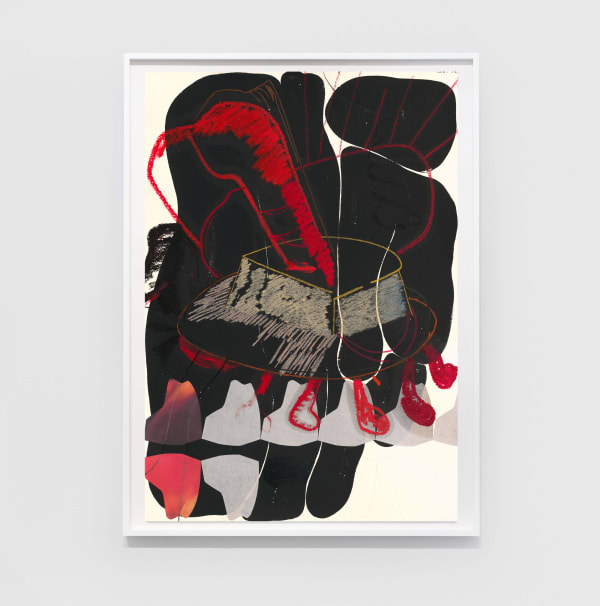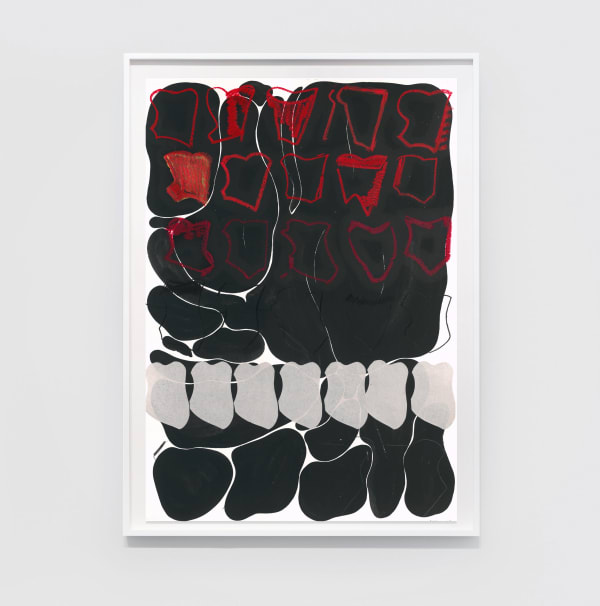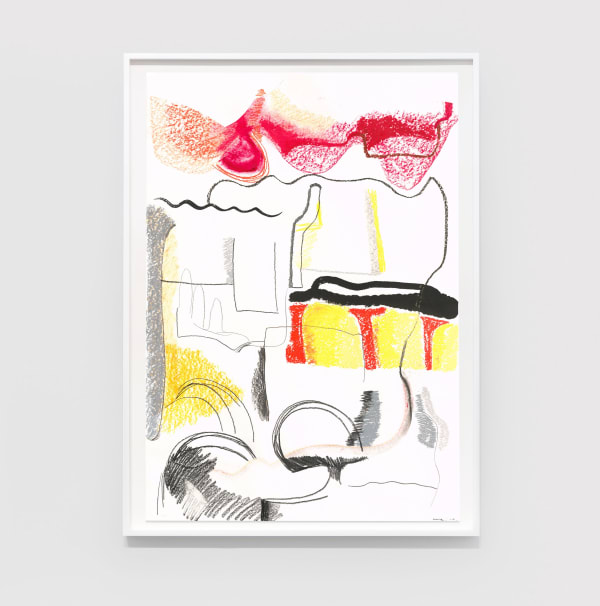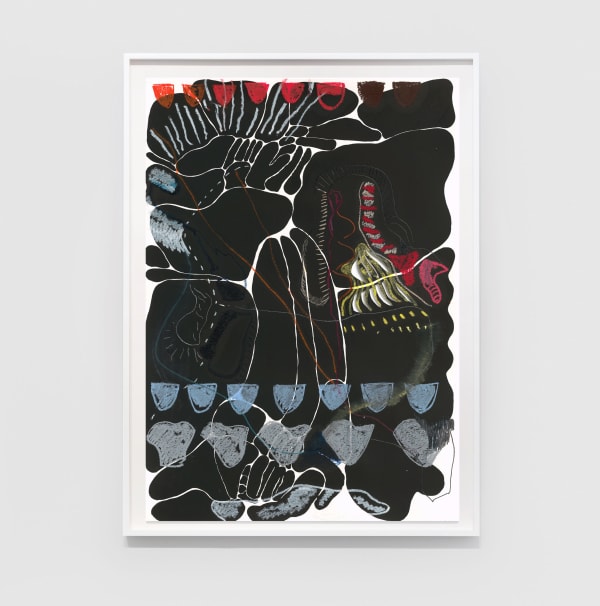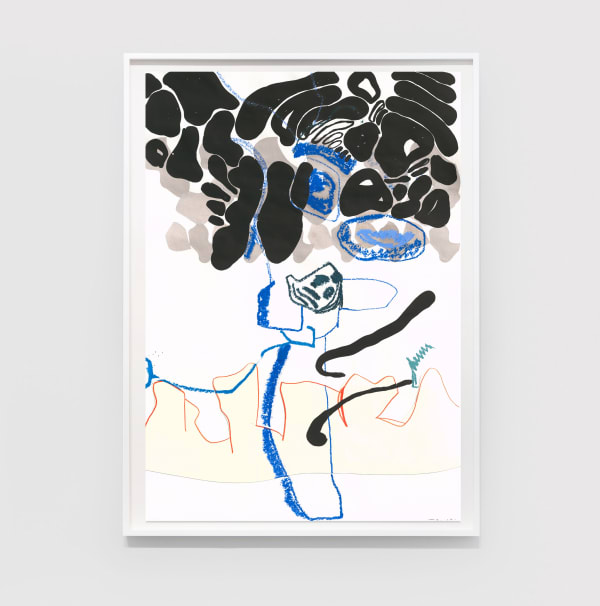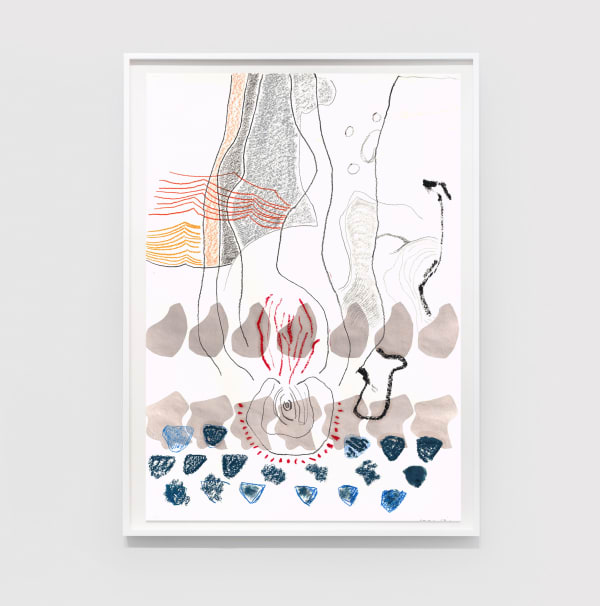He Xiangyu began the ongoing “Palate Project” in 2012 during a brief stint in the U.S. where language barriers proved difficult to navigate. He began translating the ridges, bumps, and grooves of his palate through perceptions felt with his tongue, into various visual forms. The act of translation, always aimed at demystifying the subject, here only seems to further complicate it. The phenomenological processes responsible for constructing a sense of interior space intrinsic to vocalization, the curl of the tongue that produces "rat" as opposed to "that", become a function of He Xiangyu's body mapping, supplanting the oral, and aural, by reaffirming the centrality of visual representation. Identifiable anatomical structures dissolve and re-emerge, eventually evolving into color fields of yellow with only the slightest hints of form. Based on a seemingly obvious premise, Palate Project revels in a Cartesian split of mind and body, illustrating that, in spite of proximity to subject, art remains the annotation to a lost referent.
Executed over the course of nine years, the presentation of Palate Project is composed of groups of works on paper, sculptures, and mixed media. Through a poetic and introspective transformation of the perceived oral texture, the artist has gained insight into the space of both two- or three- dimensional works. In this process, his practice is permeated with various psychological states, physical states, and residual feelings from daily life, which reveals an inner topography depicted in a highly sensitive painterly language. Alongside the intimate and gentle imagery, sharp conflicts involving identity, language, and cultural politics have emerged as well.
Executed over the course of nine years, the presentation of Palate Project is composed of groups of works on paper, sculptures, and mixed media. Through a poetic and introspective transformation of the perceived oral texture, the artist has gained insight into the space of both two- or three- dimensional works. In this process, his practice is permeated with various psychological states, physical states, and residual feelings from daily life, which reveals an inner topography depicted in a highly sensitive painterly language. Alongside the intimate and gentle imagery, sharp conflicts involving identity, language, and cultural politics have emerged as well.

